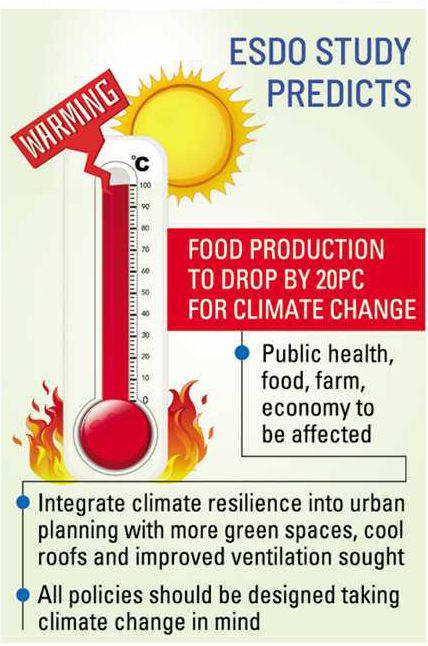
‘Maximum temp in summer may surpass 45°C by 2030’
YASIR WARDAD | Wednesday, 3 July 2024
The country's maximum temperature could surpass 45 degrees Celsius during the April-May period due to the climate change impacts, a latest study revealed on Tuesday.
If the present trend persists, temperature could reach as high as 46°C by 2050, which might have a devastating impact on the country's agriculture and food production, reducing output by 20 per cent.
The study titled "the impact of heatwaves in Bangladesh: historical trend, present challenges and future projection" was revealed at a launching programme at the Women's Voluntary Association (WVA) Auditorium in the capital.
The Environment and Social Development Organisation (ESDO) conducted the study taking in consideration meteorological data between 1974 and 2024.

The report said Bangladesh is experiencing a significant shift in climate patterns, with temperatures steadily rising and heatwaves becoming more frequent. This summer, the country recorded its highest temperature of 43.8°C in 52 years, reflecting the broader trend of global warming impacting the region.
"Looking forward, by 2030 temperatures during heatwaves could exceed 45°C, and by 2050 they might surpass 46°C due to the climate change impacts. The production of major crops like rice and wheat may decrease by up to 20 per cent."
From 1974 to the early 2000s, Bangladesh's temperatures remained relatively stable, punctuated by occasional spikes.
However, since the turn of the millennium, there has been a marked increase in maximum temperatures, signalling a transition to hotter climates.
The period between 2014 and 2024 has seen multiple instances where temperatures soared past 37.8°C (100°F).
Projections indicate that by 2030 average highest temperatures could reach approximately 33.9°C, with extreme peaks potentially hitting 39.9°C.
Looking further ahead to 2050, average highest temperatures might reach around 34.6°C, with the possibility of extreme peaks reaching 40.6°C.
The rising temperatures pose a severe threat to agriculture, a backbone of Bangladesh's economy.
Major crops, including rice and wheat, are at risk, with yields potentially decreasing by up to 20 per cent due to the harsh climate conditions.
Notable heatwaves were recorded in 1994, 2004, 2014, and 2024, suggesting a pattern of recurring extreme heat events every decade.
This trend points to a potential future heatwave around 2034, prompting the need for urgent preparations.
However, the ESDO study found four factors collectively intensified the recent heatwaves which include the geographical location of our country in the tropical monsoon climate zone, exacerbated by global climate change; increased carbon emissions from fossil fuels and industries contributing to greenhouse gas buildup; oceanic influences such as El Niño events altering regional weather patterns; and natural climate variability amplified by human activities.
"The projection has been done based on previous trends and if these trends continue, the temperature will be intolerable for us in the future," ESDO Chairperson Syed Marghub Morshed said.
He said comprehensive and long-term policies should be implemented to reduce greenhouse gas emissions and enhance resilience against future heatwaves.
Dr Shahriar Hossain, senior policy and technical adviser of the ESDO and lead author of the study, said: "The current extreme heatwave in Bangladesh, with temperatures exceeding 40°C, underscores the urgent need for combatting climate change, as millions suffer health issues and critical sectors like food and agriculture face severe challenges."
"We also need to change unsustainable urbanisation and adopt sustainable and environment-friendly urban planning," he said.
He said high incidences of heat stress, dehydration, heat exhaustion, and heat stroke were found during the study as 70 per cent of our population were exposed to extreme heatwaves in 2024.
tonmoy.wardad@gmail.com